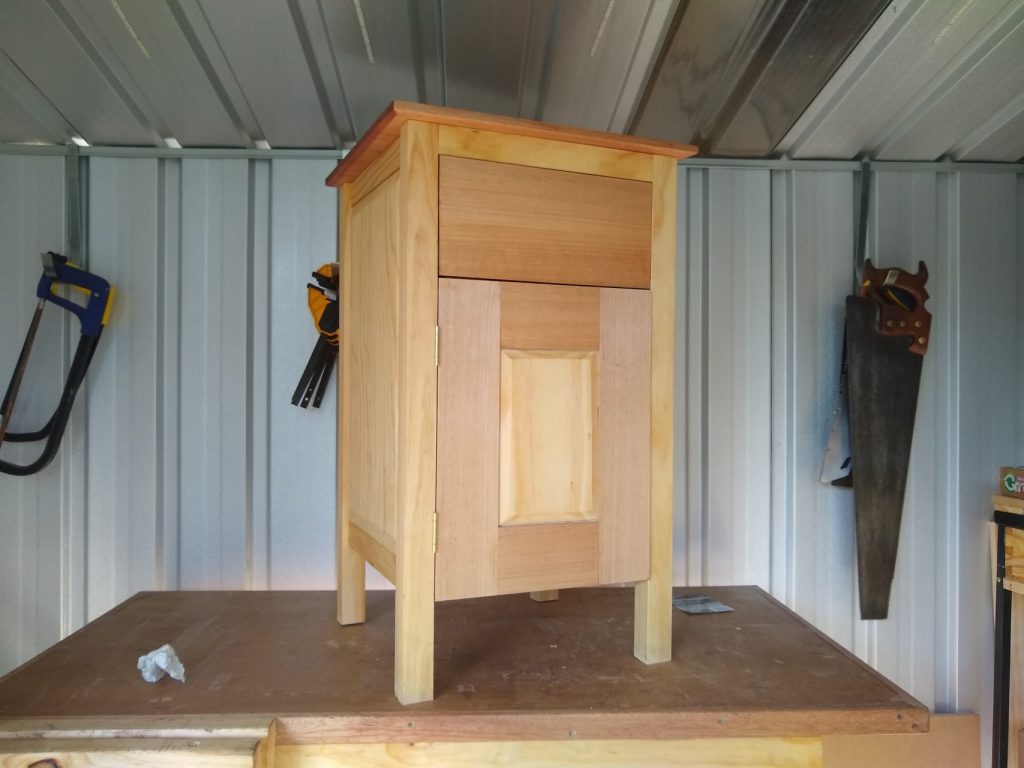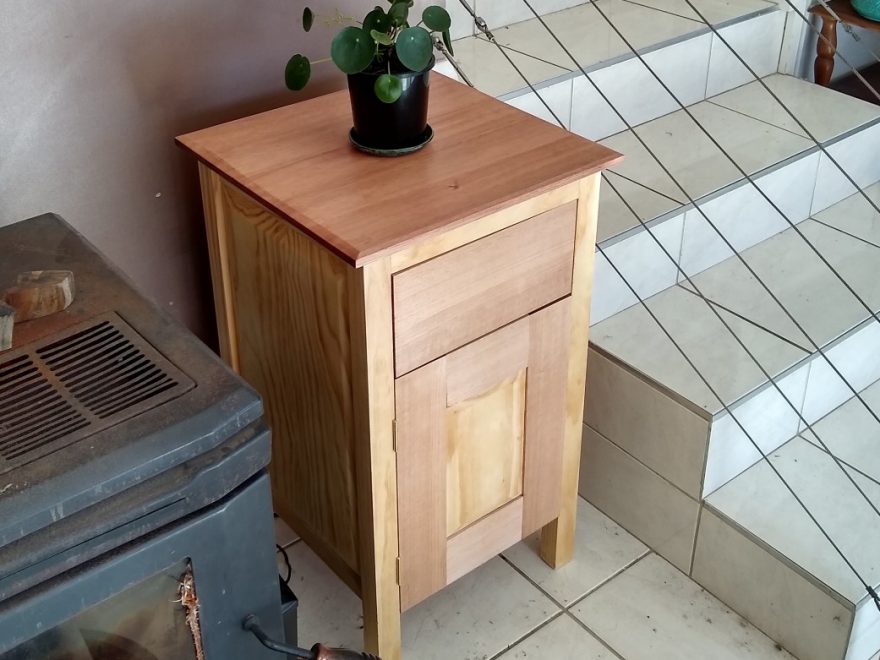This cabinet was designed for the living room to hold our modem/router and NAS on the lower shelf, covered by a door and with a drawer above. The back is open to allow cables to enter and for airflow, but apart from this slighly unsual feature it could be used as a general side cabinet or bedside table.
I’ve been dabbling in woodworking over the last few months and designed this cabinet to practice and test out some of the skills. It has frame and panel sides, with mortise and tenon joints throughout. The drawer has blind dovetails on the front and a dado on the back (my first attempt at both of these joints). The main body is made of pine (to keep costs down) with tasmanian oak for the top, drawer front and the door frame (another first, working with a hardwood).
The whole project was done with hand tools only: a no. 4 plane, a few chisels, a 26″ hand saw and a small gents saw.
Building the frame
The body is composed of 2 frame and panel pieces on either side, with simple rails running across the front and the back to tie them together. Mortise and tenon joints are used throughout, and the panels in the sides are tongue and grooved and floating in the side frames. The base of the shelf is made of solid pine laminated into a board. The legs are 2 laminated 19mm thick pieces to be roughly 38x38mm.

Cutting mortises in the frame legs 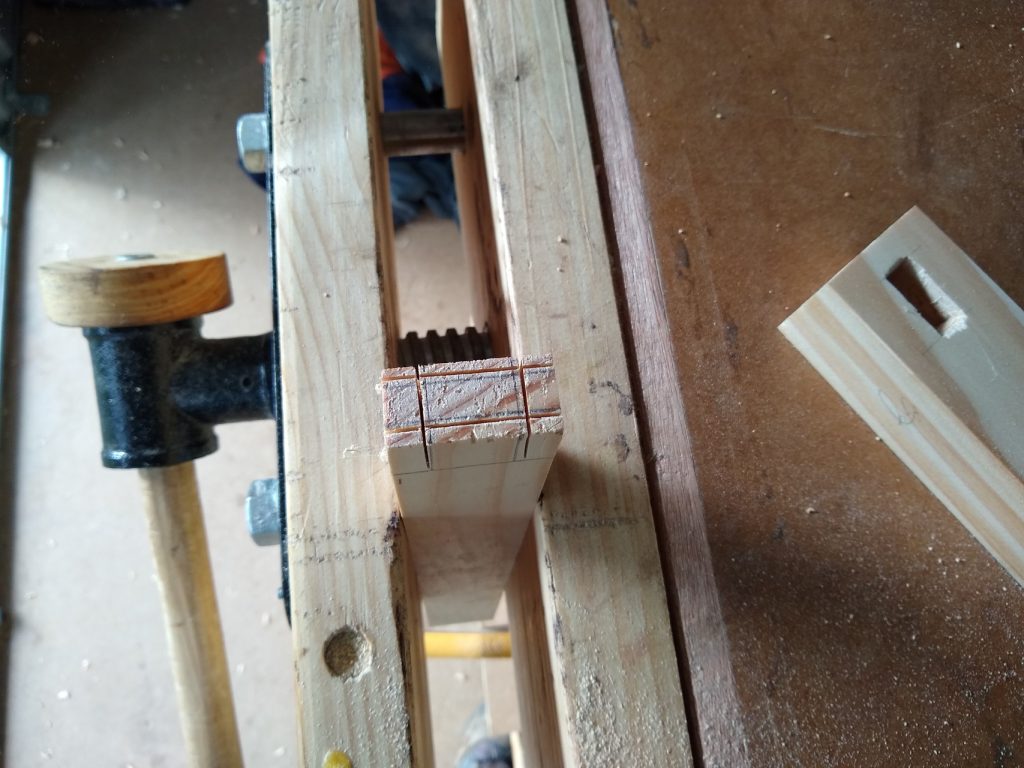
Cutting the tenons 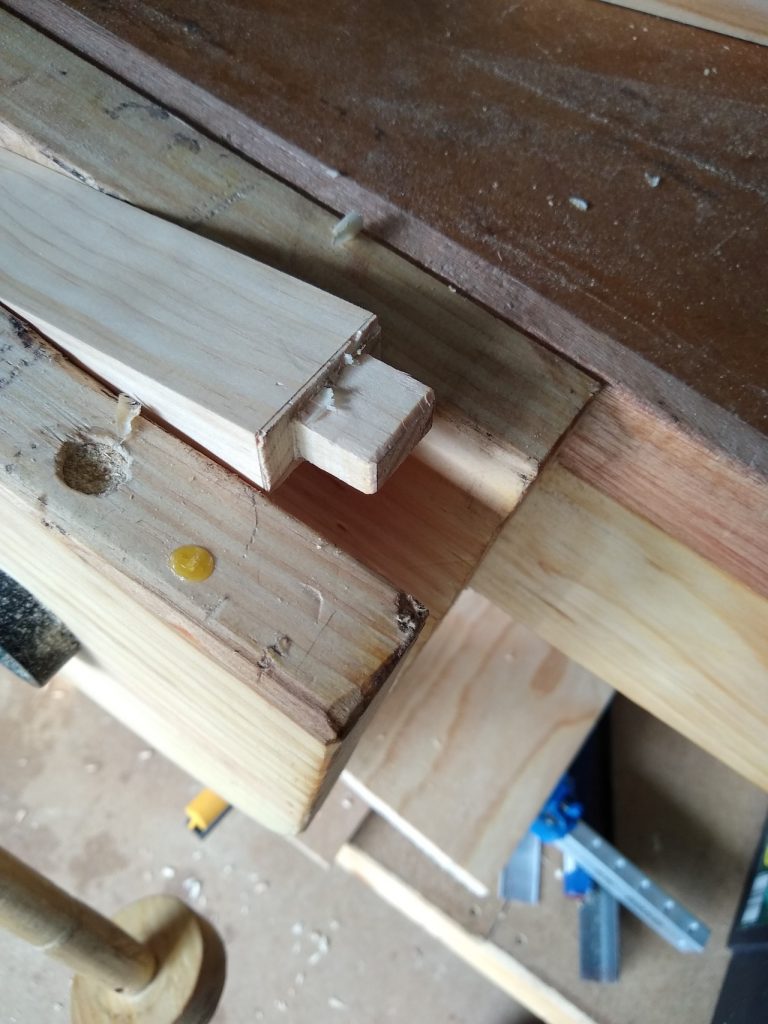
Rough cut tenon, needs to be cleaned up with a chisel 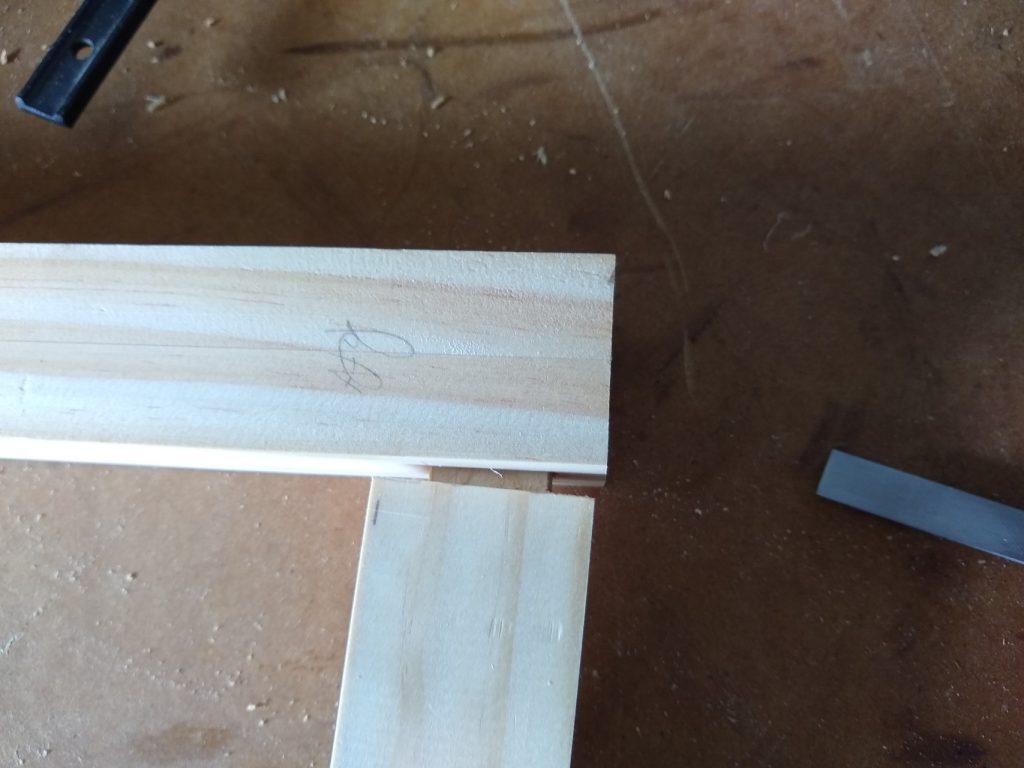
Test fitting 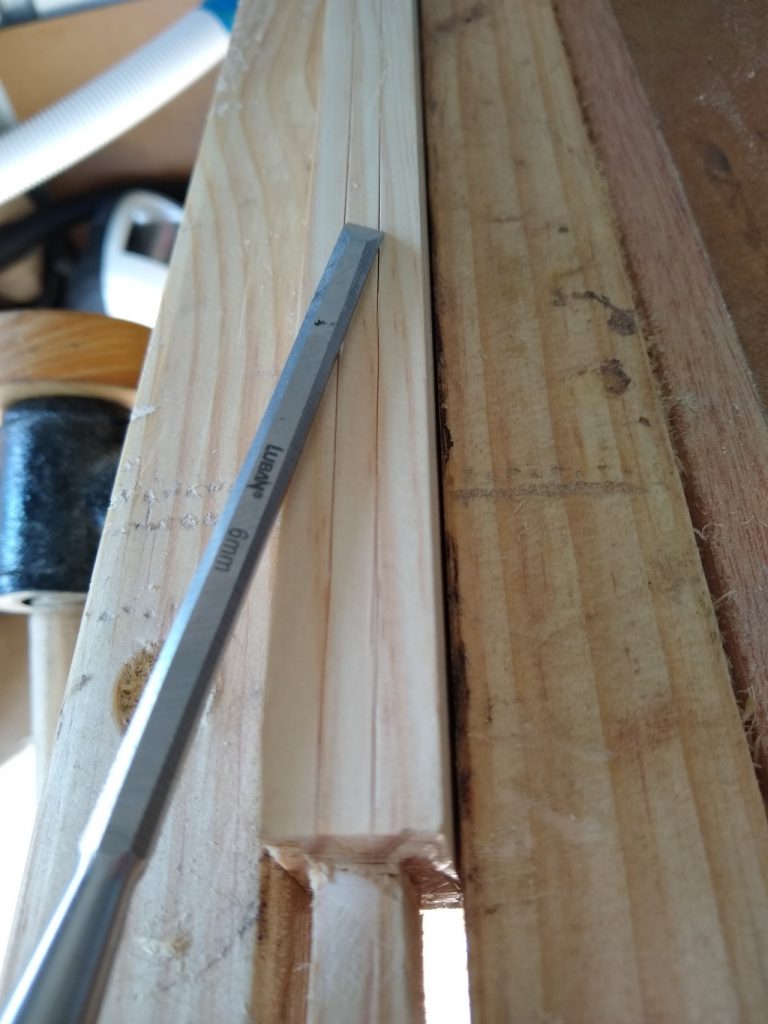
Cutting the groove for the side panel to fit in. I don’t have a plough plane, so this was cut by hand with a chisel 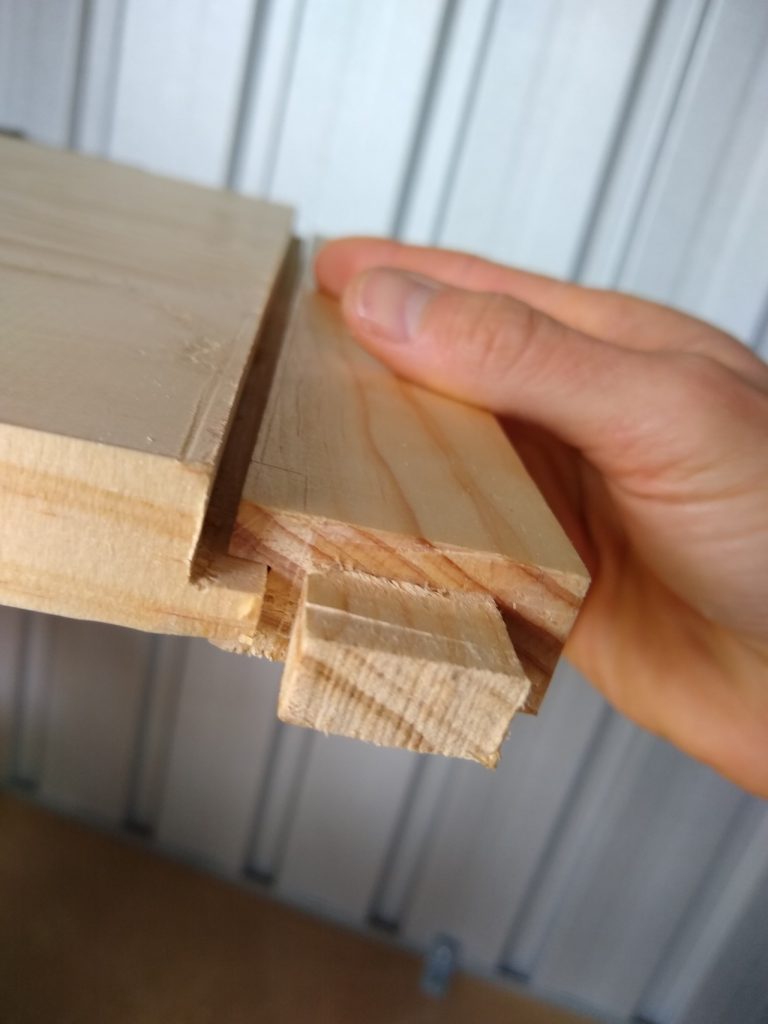
Test fitting the panel into the frame (before the bevel was cut in the panel) 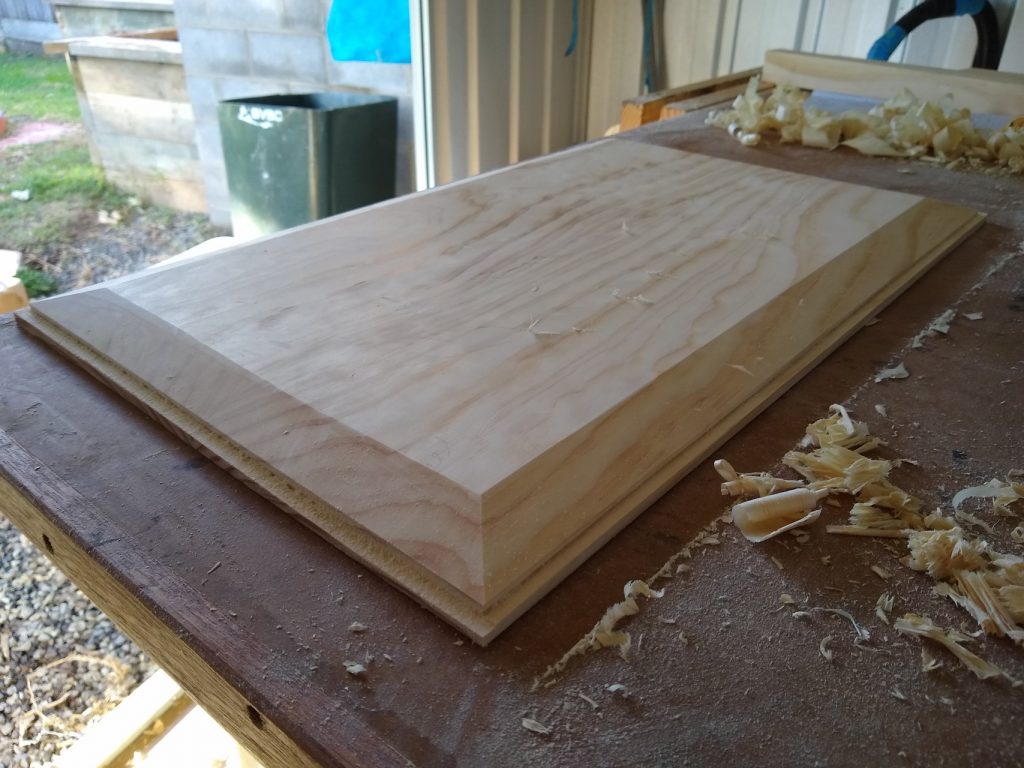
Panel tongue and bevel finished 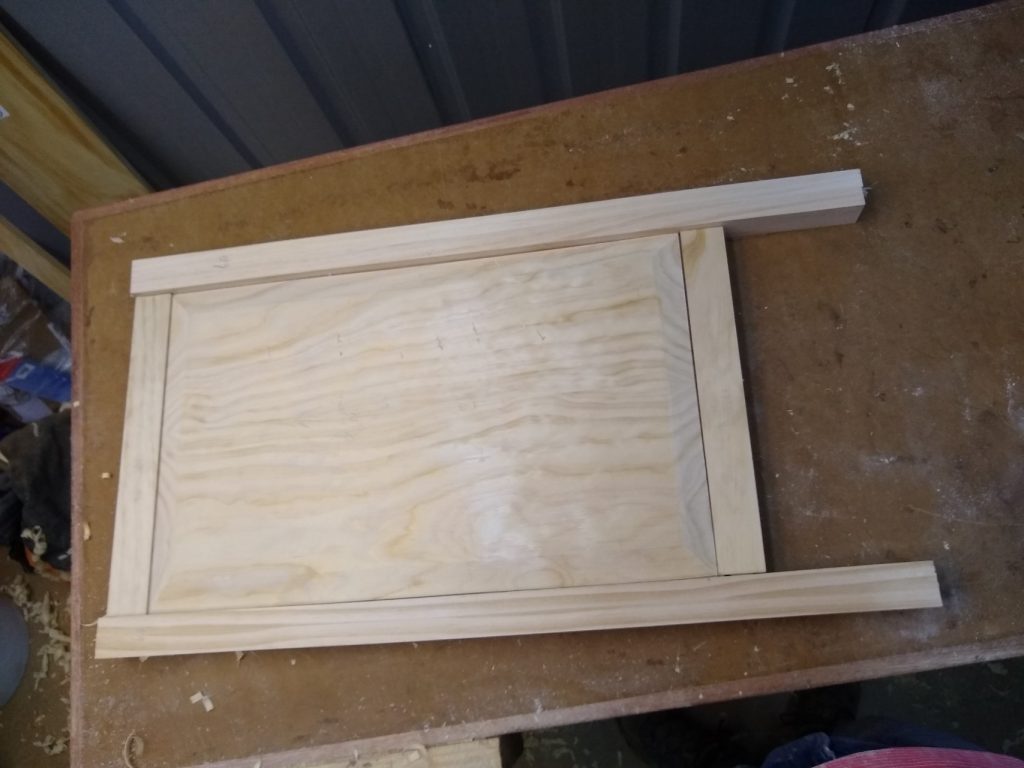
Test fit 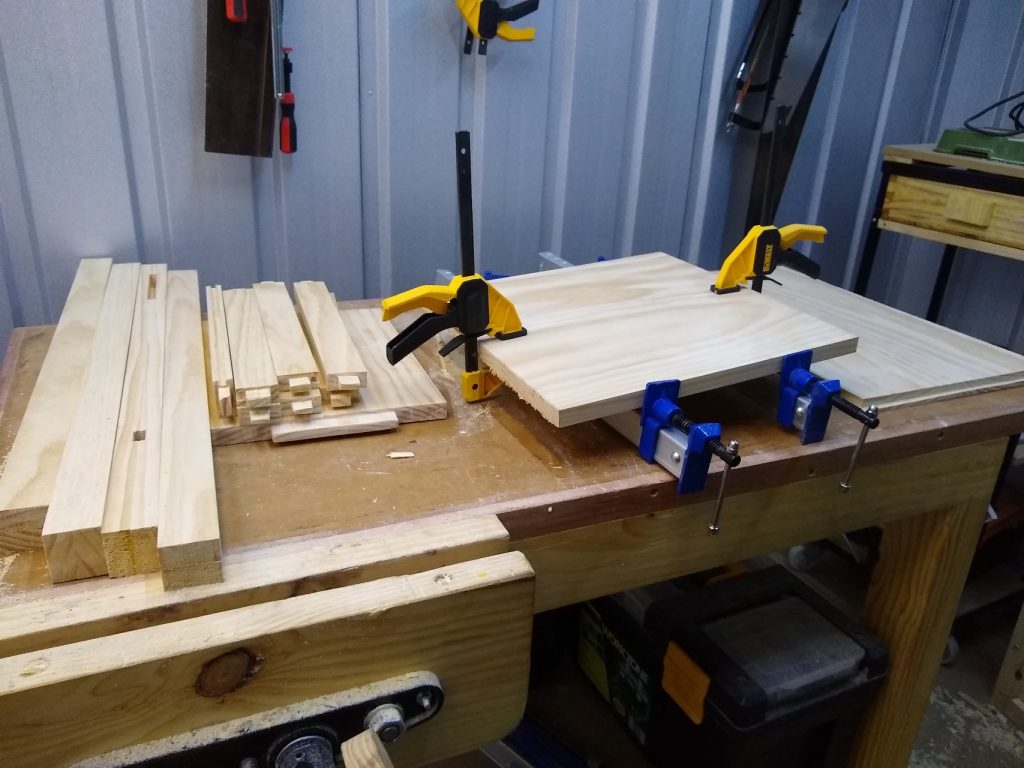
Laminating boards to make the base. All the pieces ready to assemble on the left 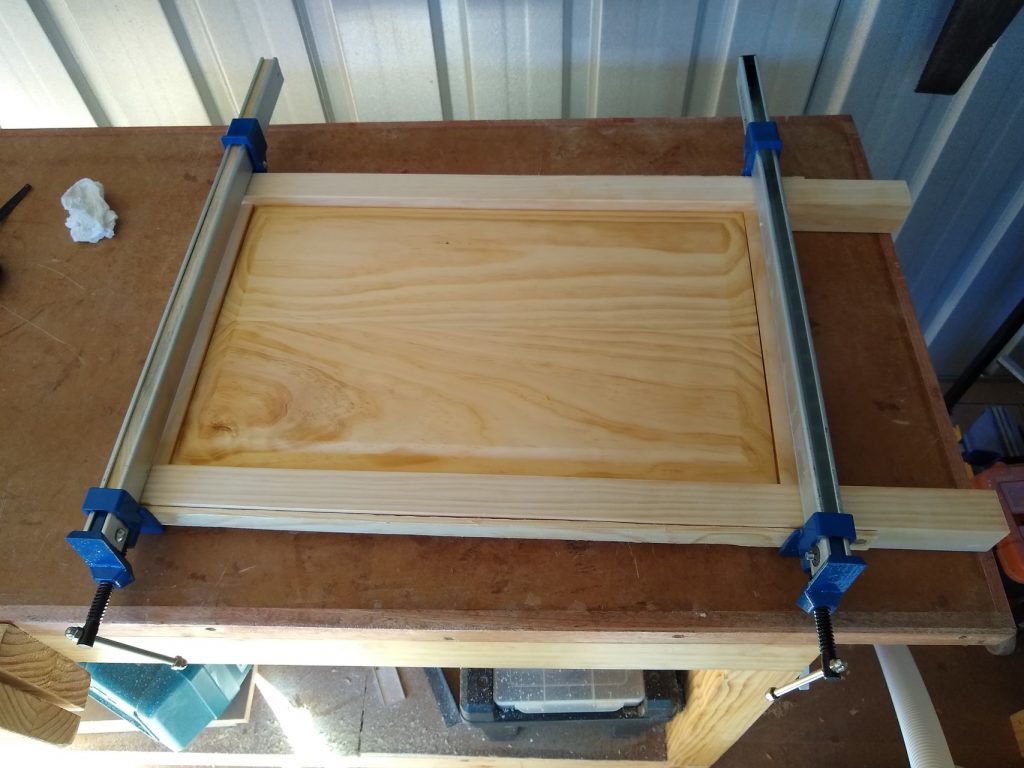
Glueing one of the side panels 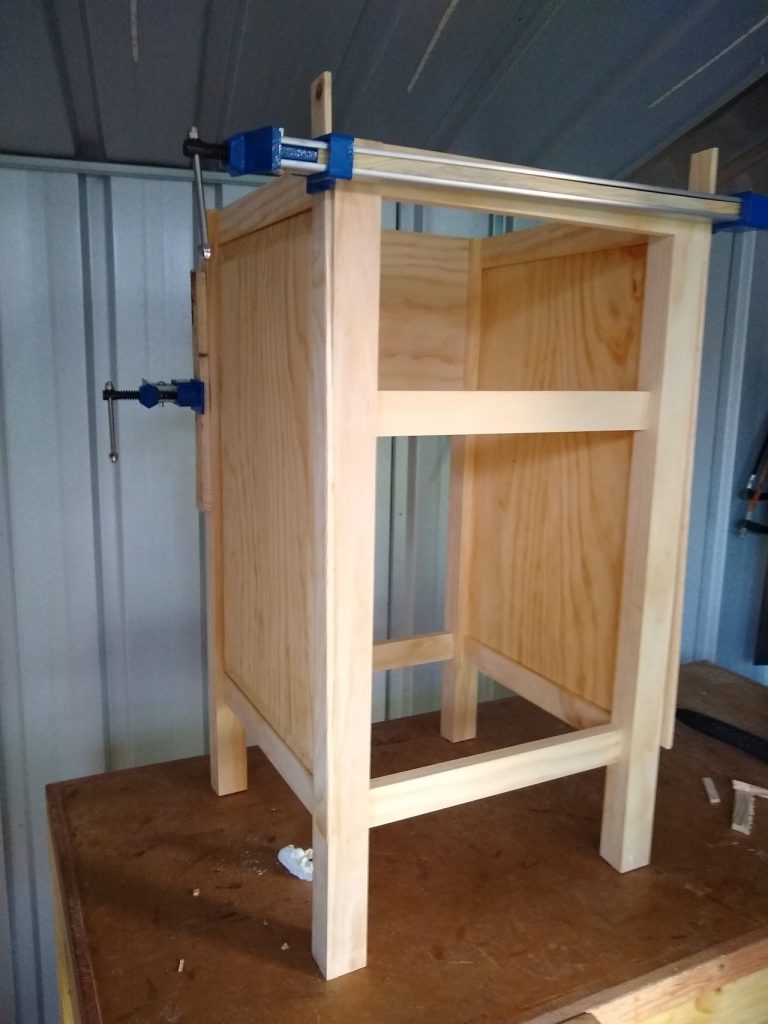
Final glue-up of the 2 side panels with front and back rails 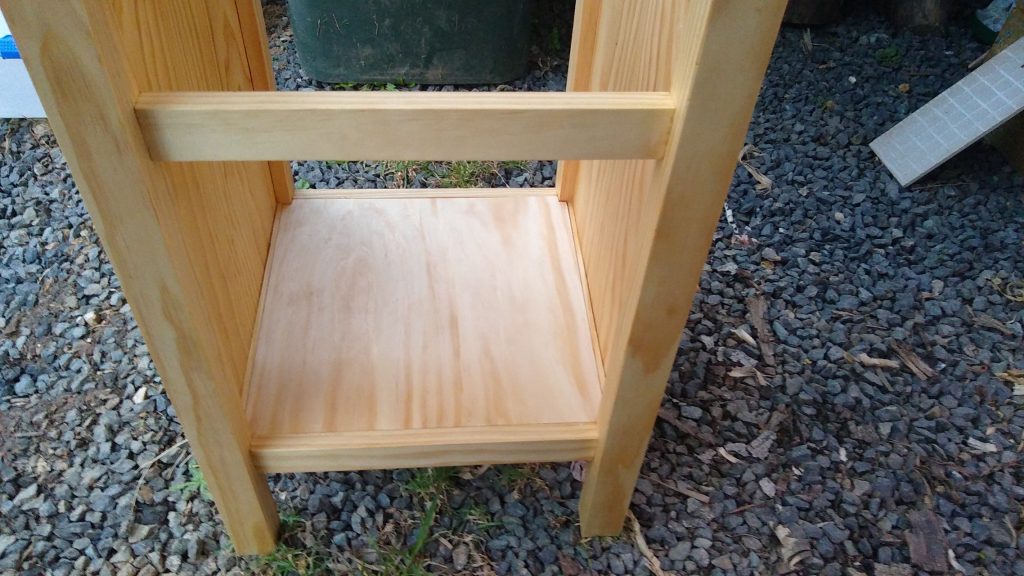
Base cut to size with cutouts at the back to fit around the rear legs 
The base just sits on 4 rails underneath it on the frame. Since these will not be seen, they are just screwed in place. 
The top is attached with figure 8 clips recessed into the top of the frame so the top is flush with the top of the frame 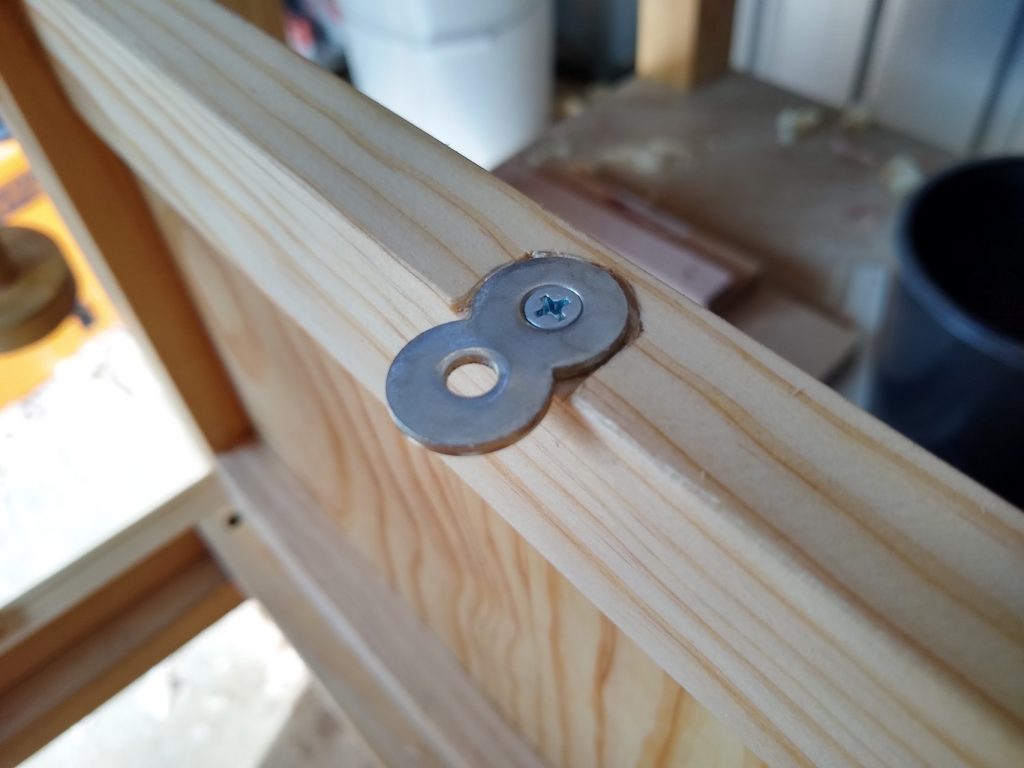
Figure 8 clips recessed into the frame 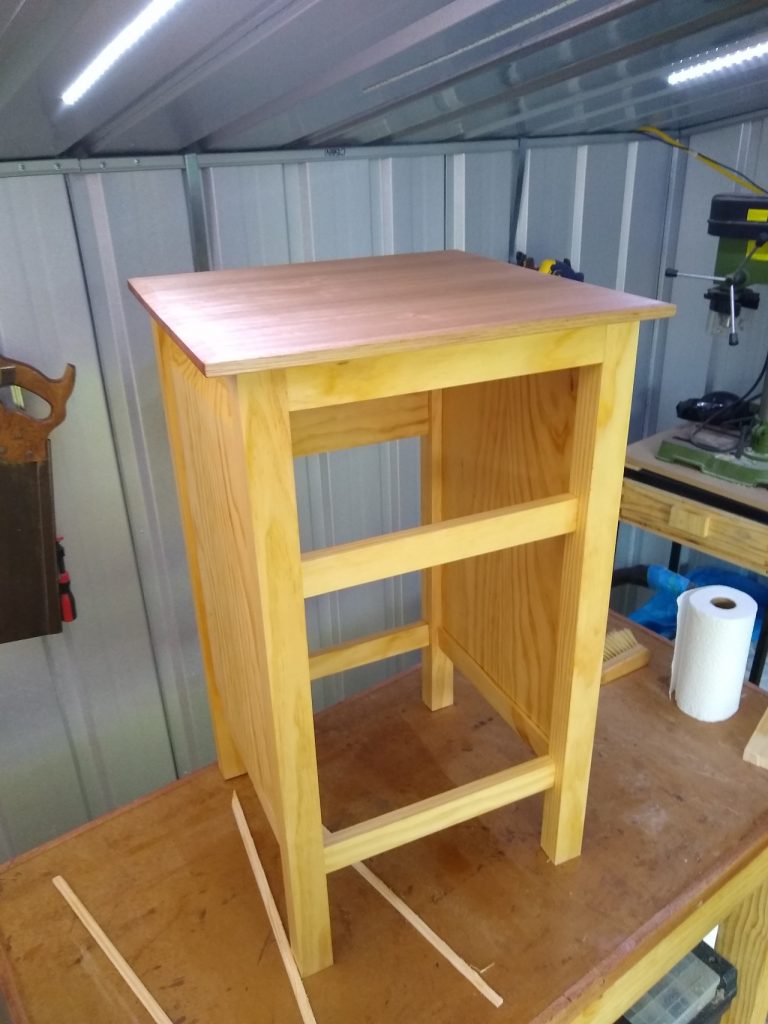
Finished with boiled inseed oil, and test fitting the top (top laminated and cut to size, but not bevelled yet). 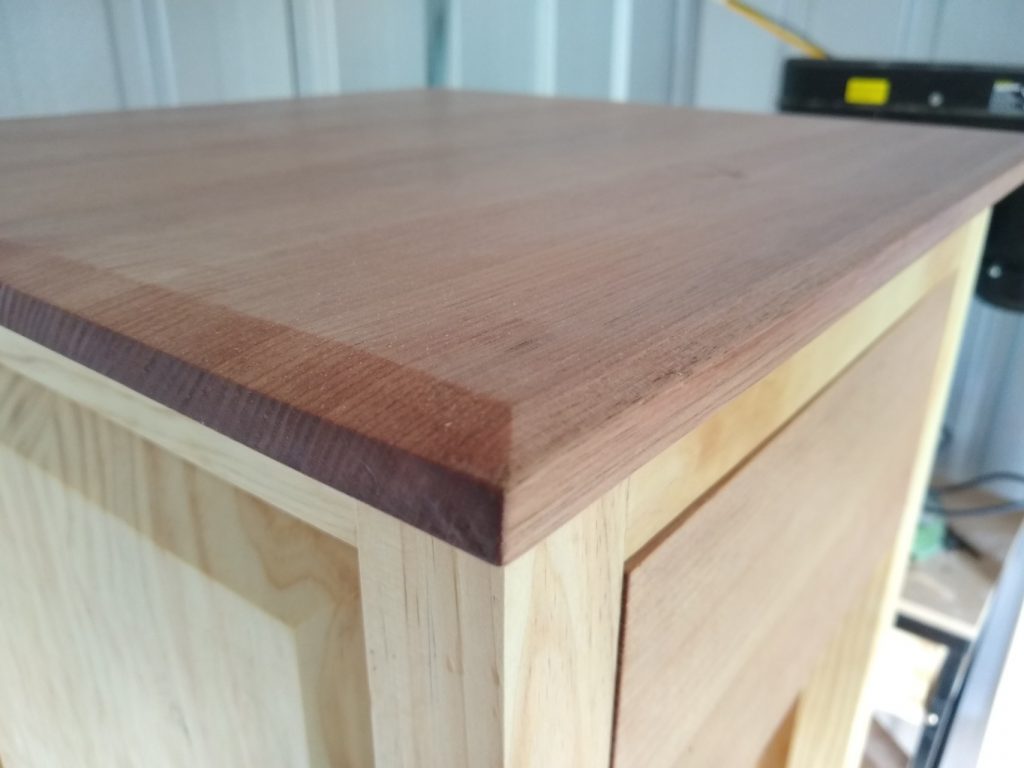
The top is made of 5 90mm x 19mm boards laminated together. Once glued, the edges were bevelled to match the styling on the panels
Building the drawer
The drawer is flush mounted with the front of the frame, with half-blind dovetails on the front, and a dado joint on the back with a solid wood base. The front is made of tasmanian oak, and the rest is pine.
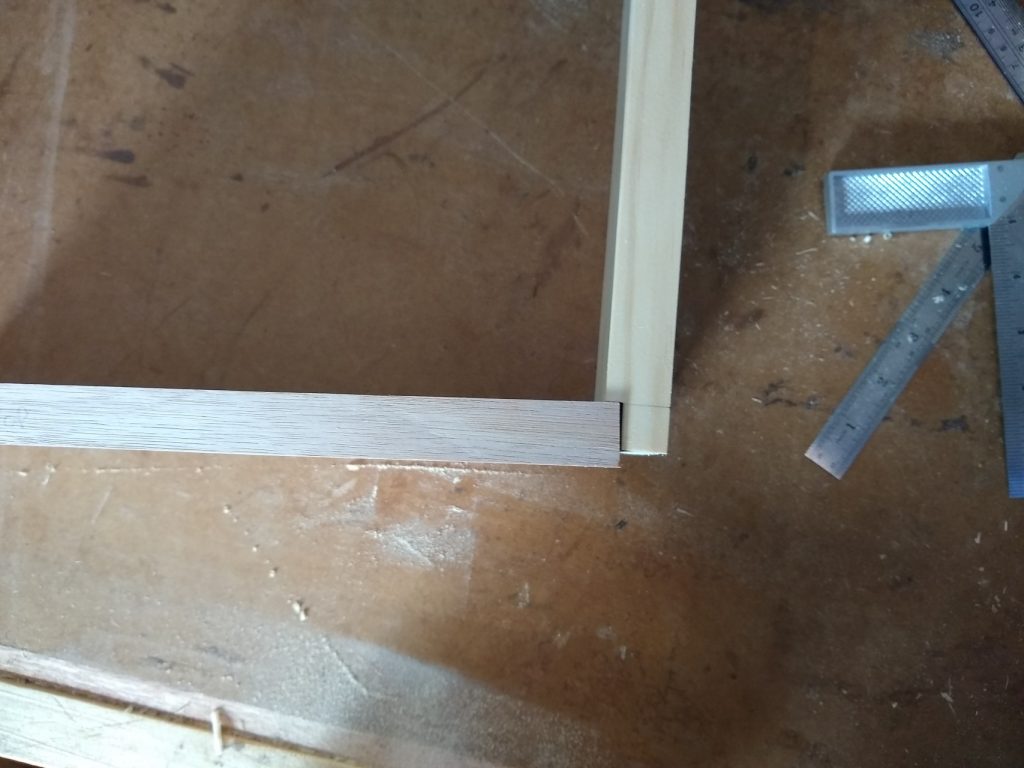
Cut a rebate on the inside of the drawer sides 
Mark and cut the dovetails on the sides 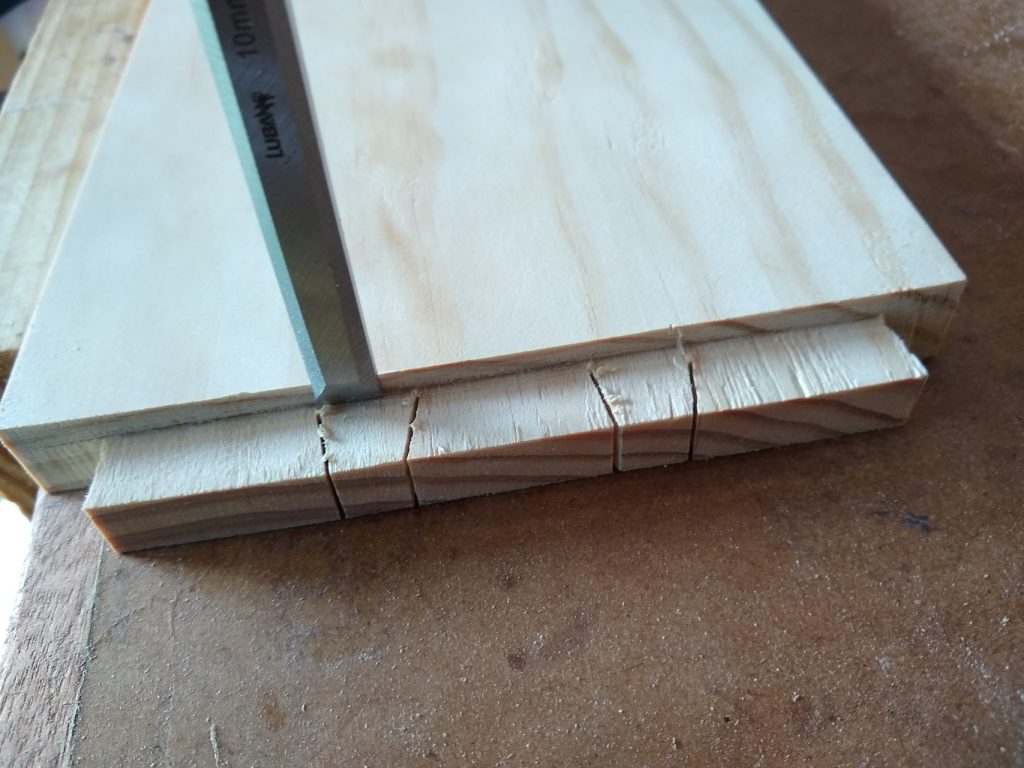
Chisel out the waste, alternating between chopping down, and removing the waste 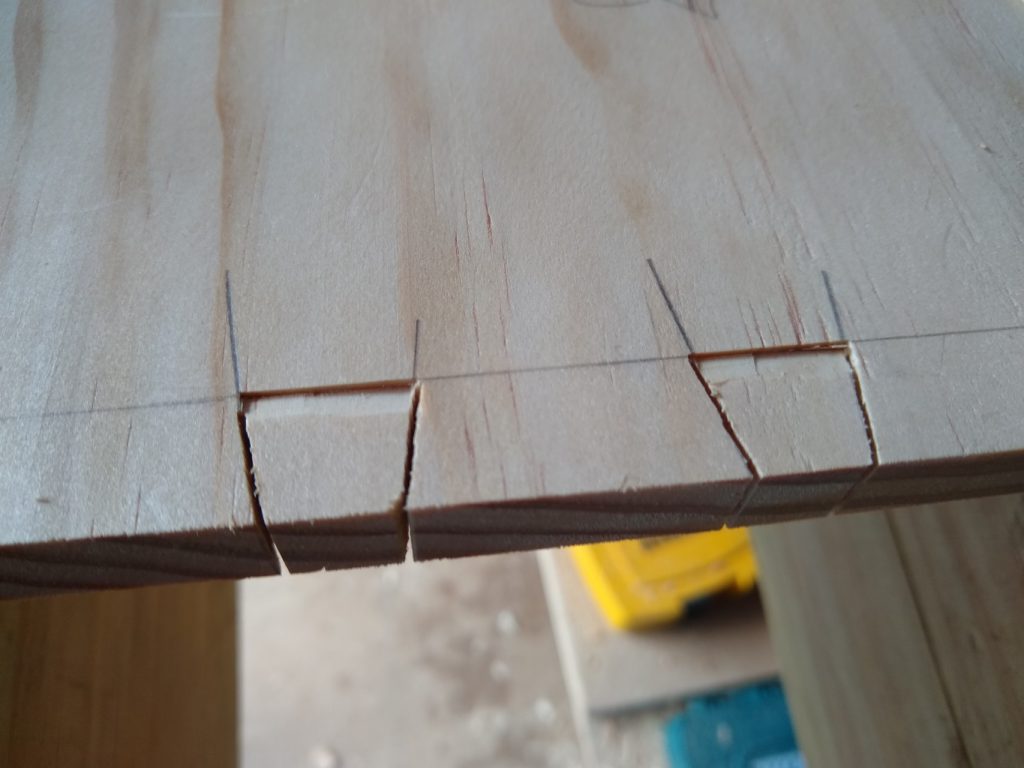
Chisel out the waste 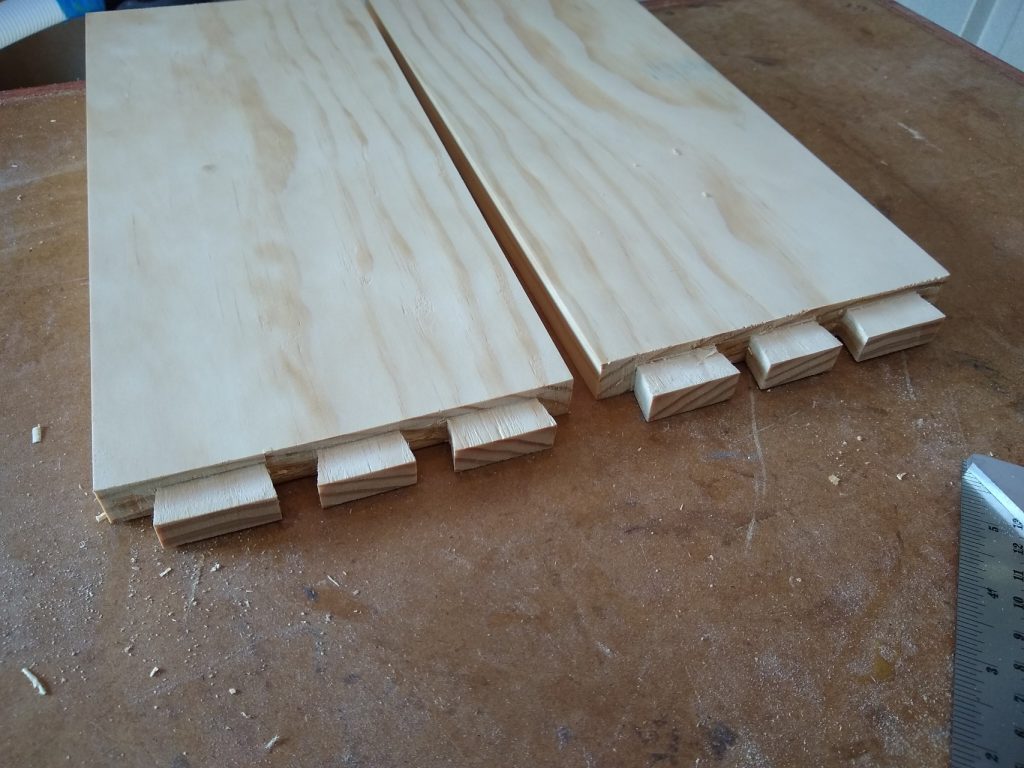
Completed dovetails

Transfer dovetail sizes to the front 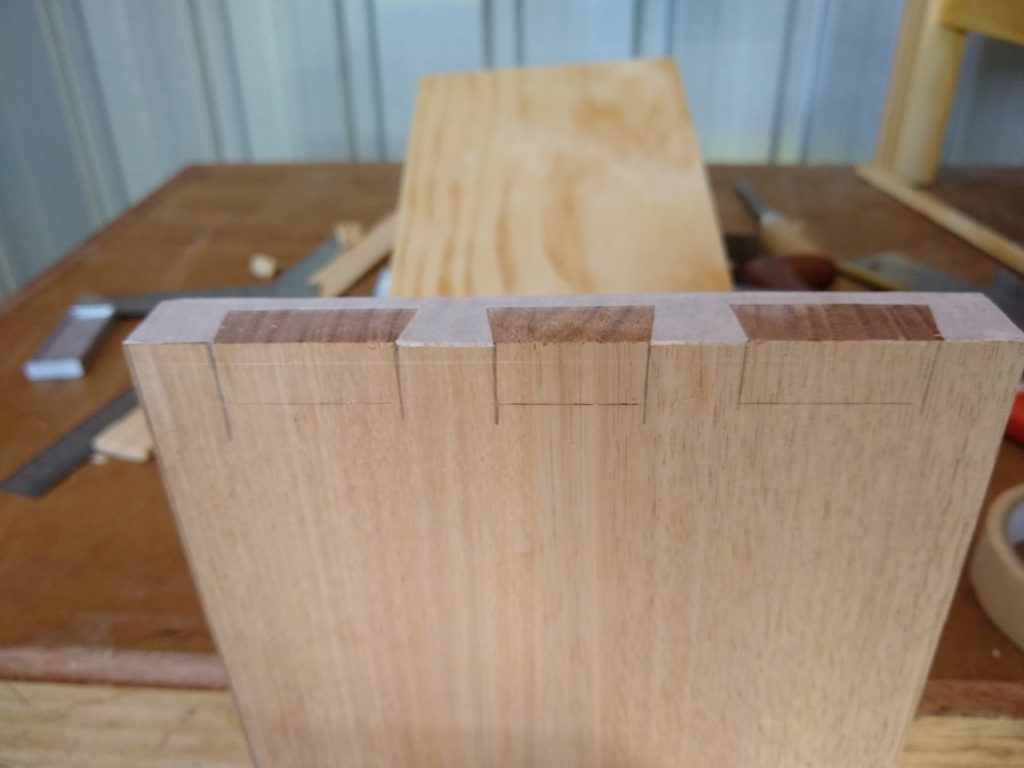
Pins marked on the front panel 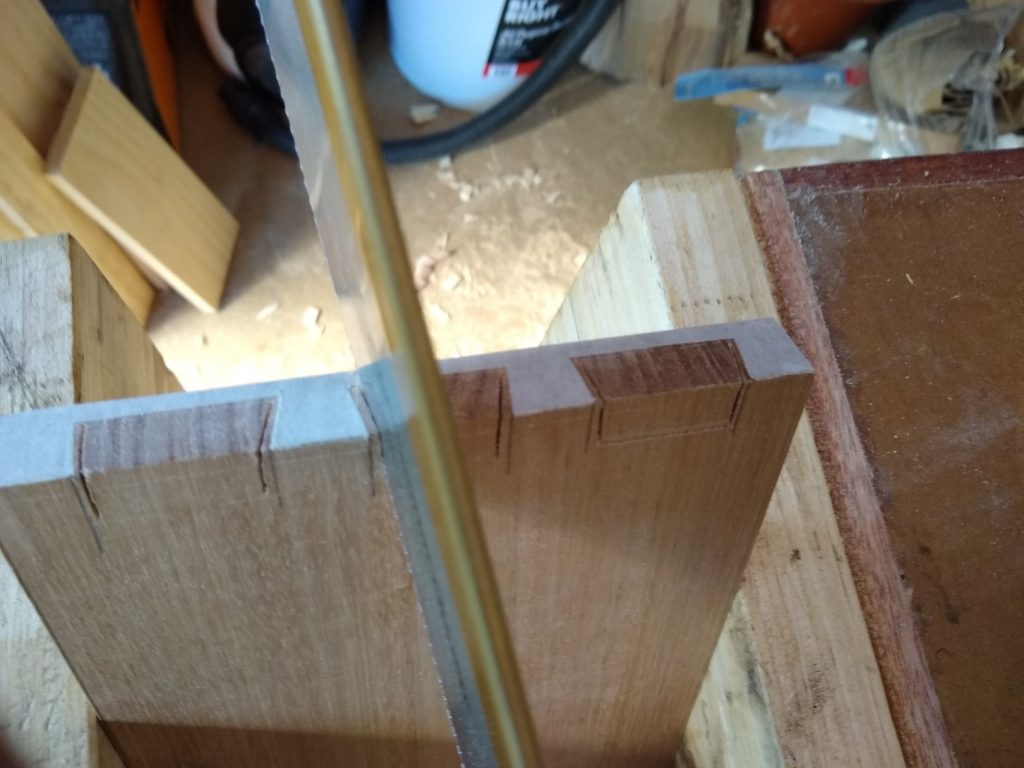
Cut the pins at a 45 degree angle to avoid cutting through the front 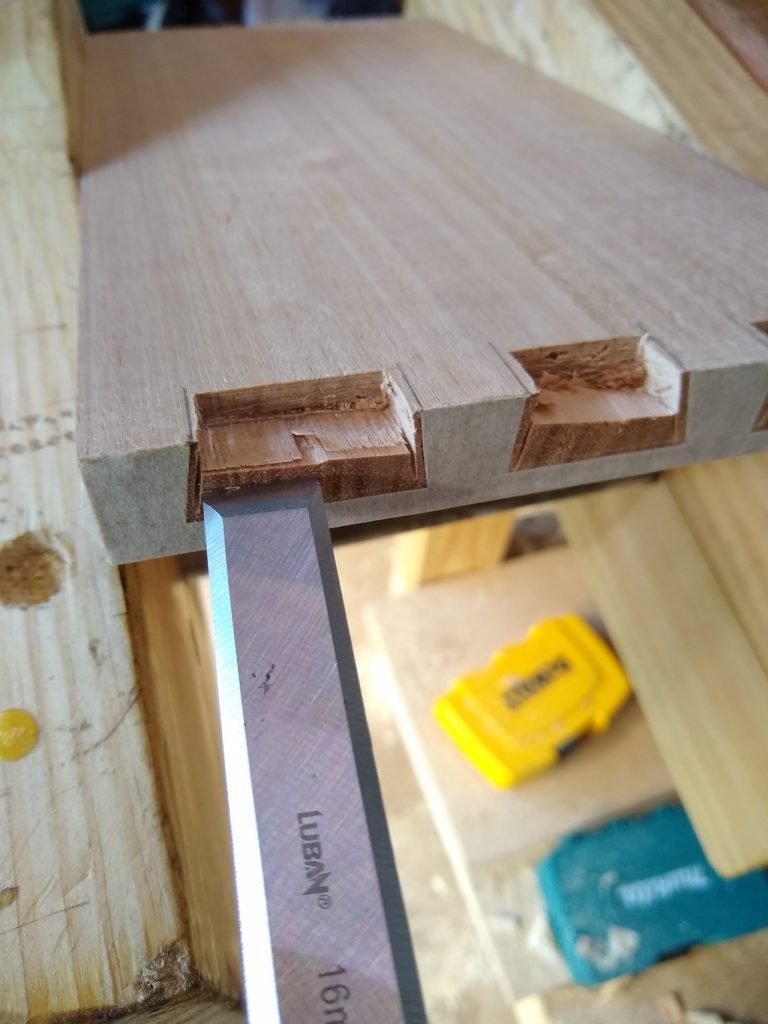
Chisel out the waste 
Completed pins 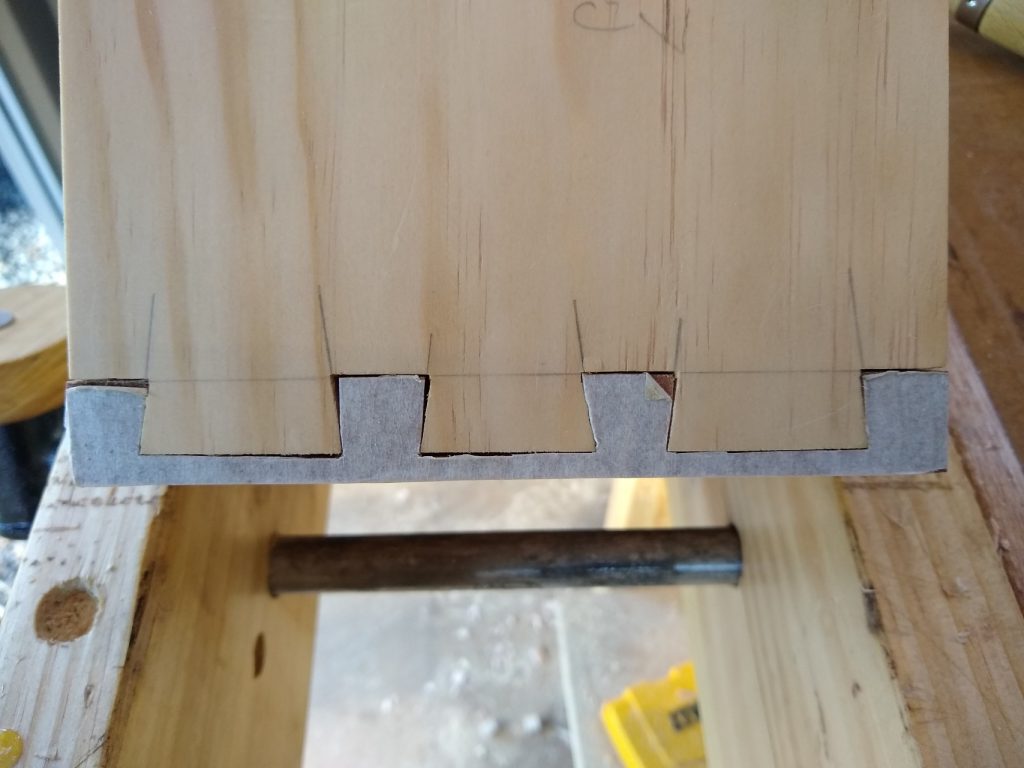
Test fit
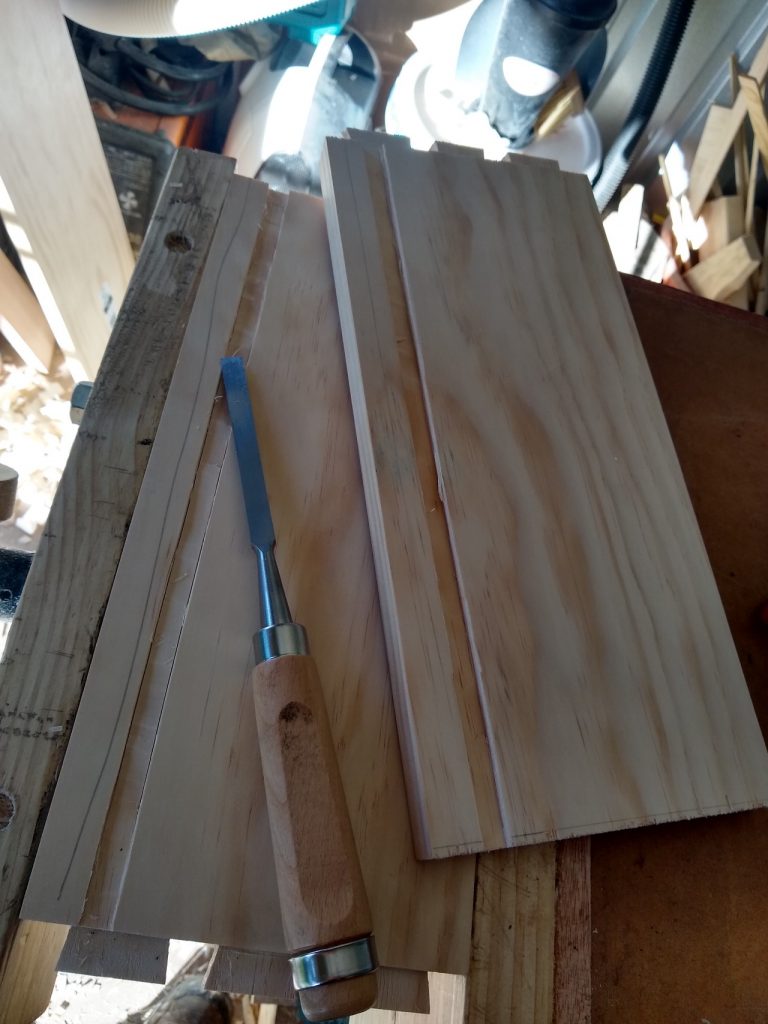
Cutting a recess for the base to sit in. I don’t have a plough plane, so this was done by hand with a chisel 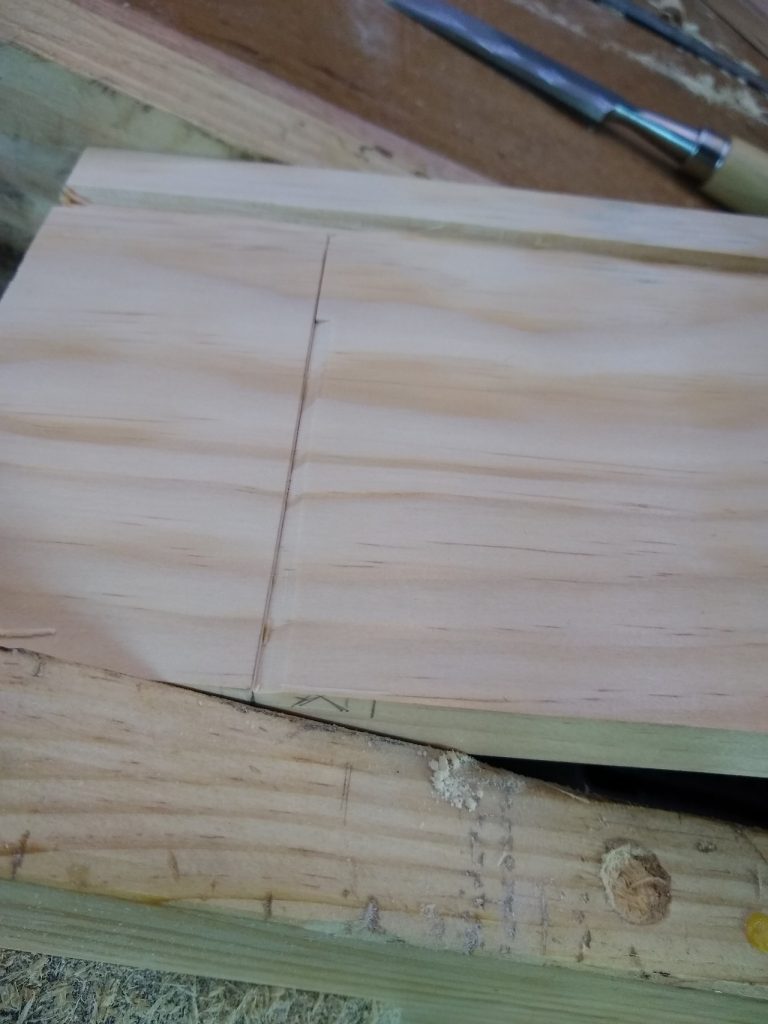
Cutting the dado 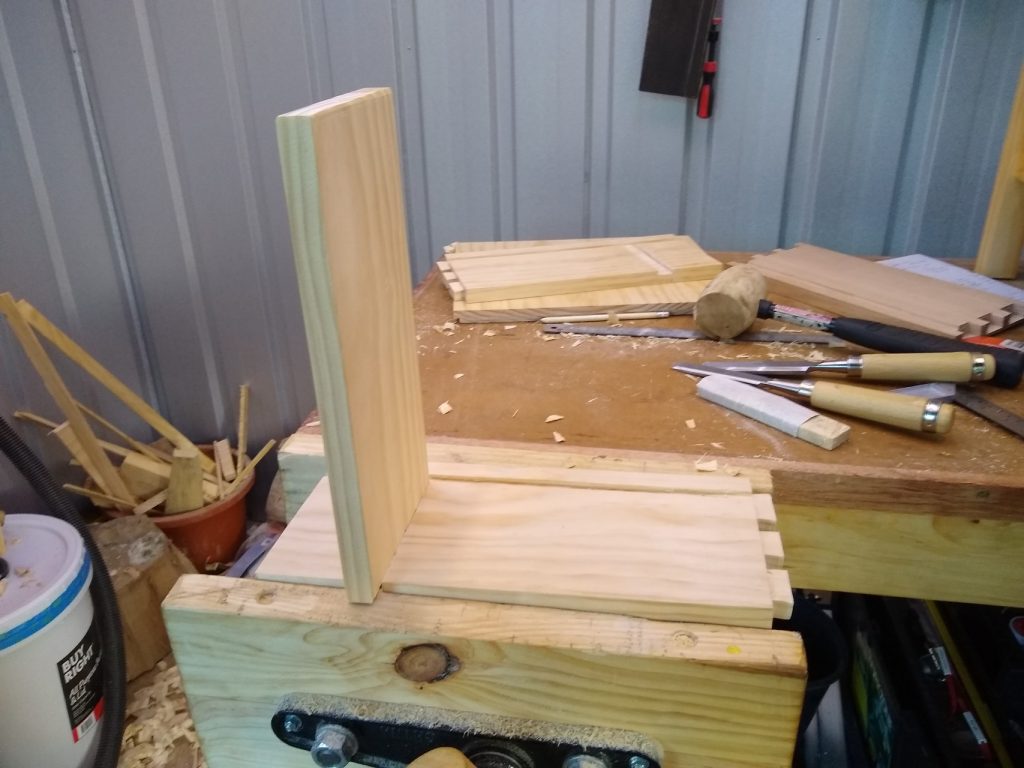
Test fit dado 
Dado complete and base fitted. The grain of the base runs side so side so expansion occurs front to back 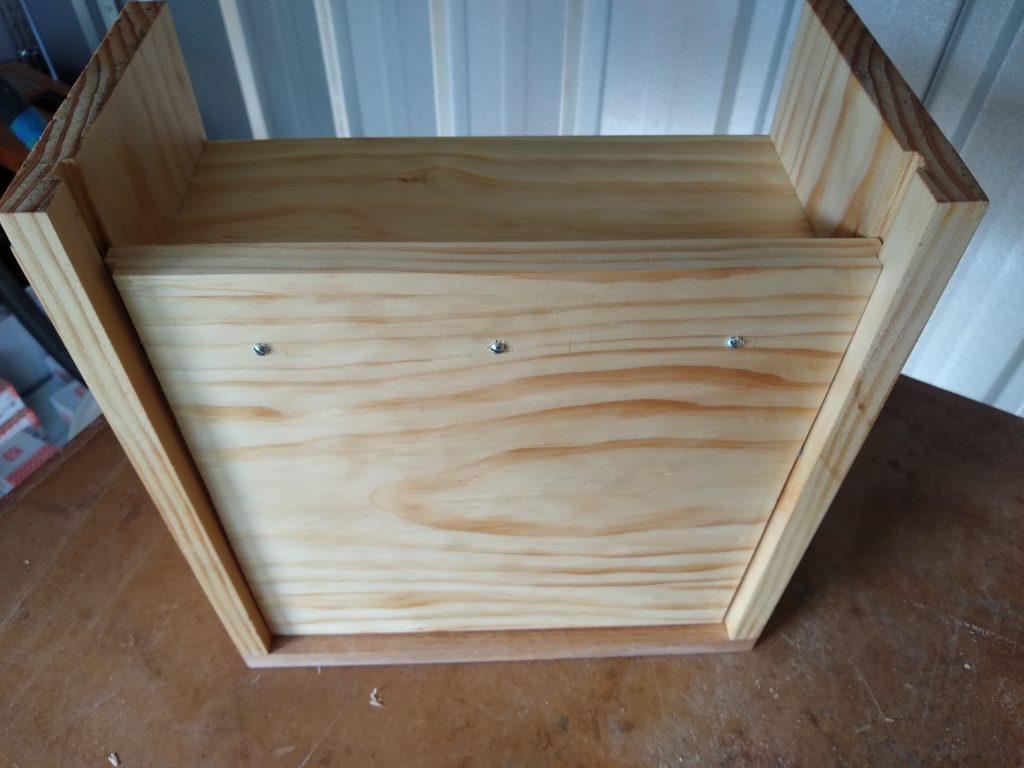
The base is not glued and only attached with 3 screws at the back, with elongated holes to allow for wood movement. 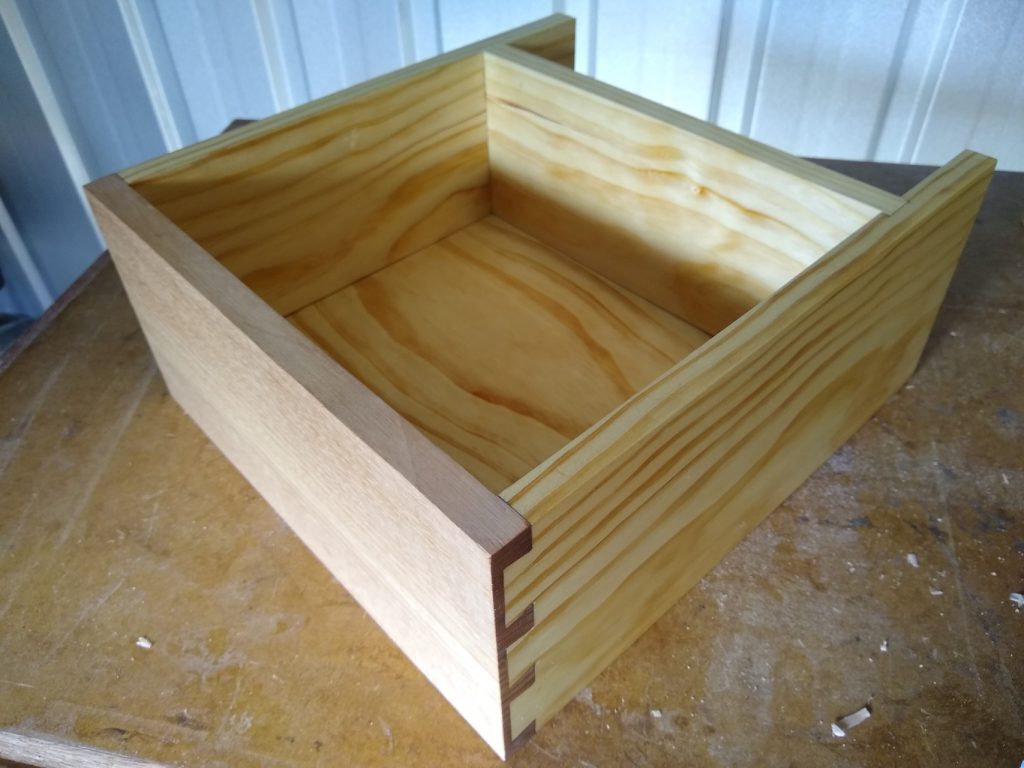
Completed drawer
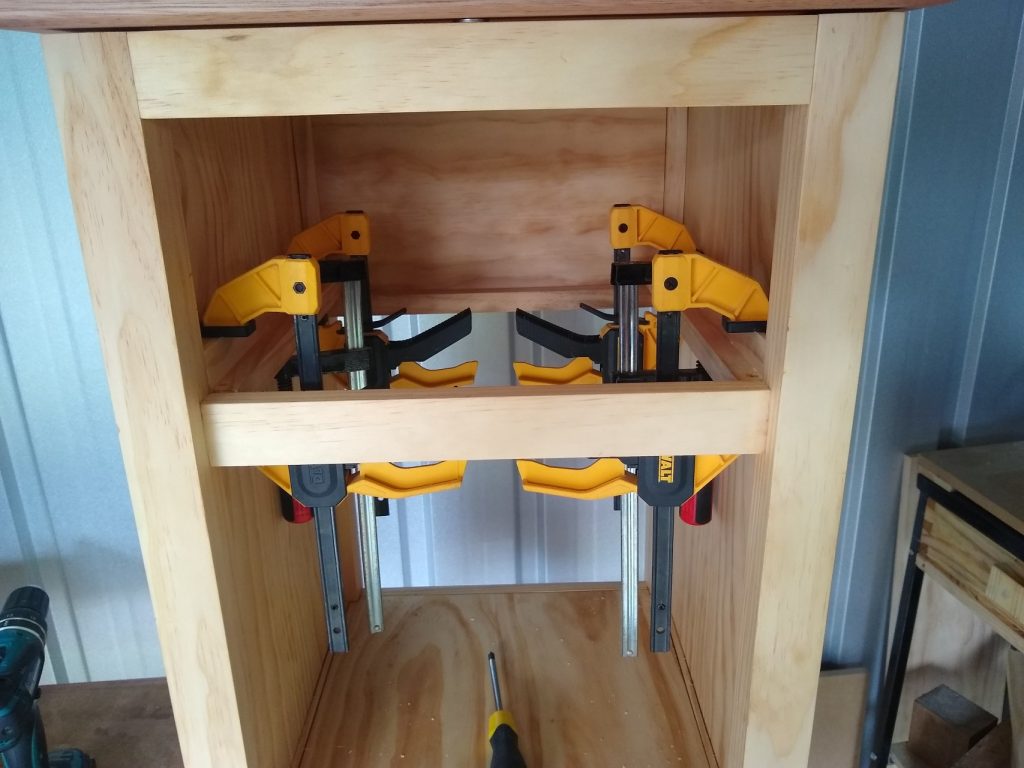
I made a simple frame for the drawer to slide on and attached it to the inside of the base 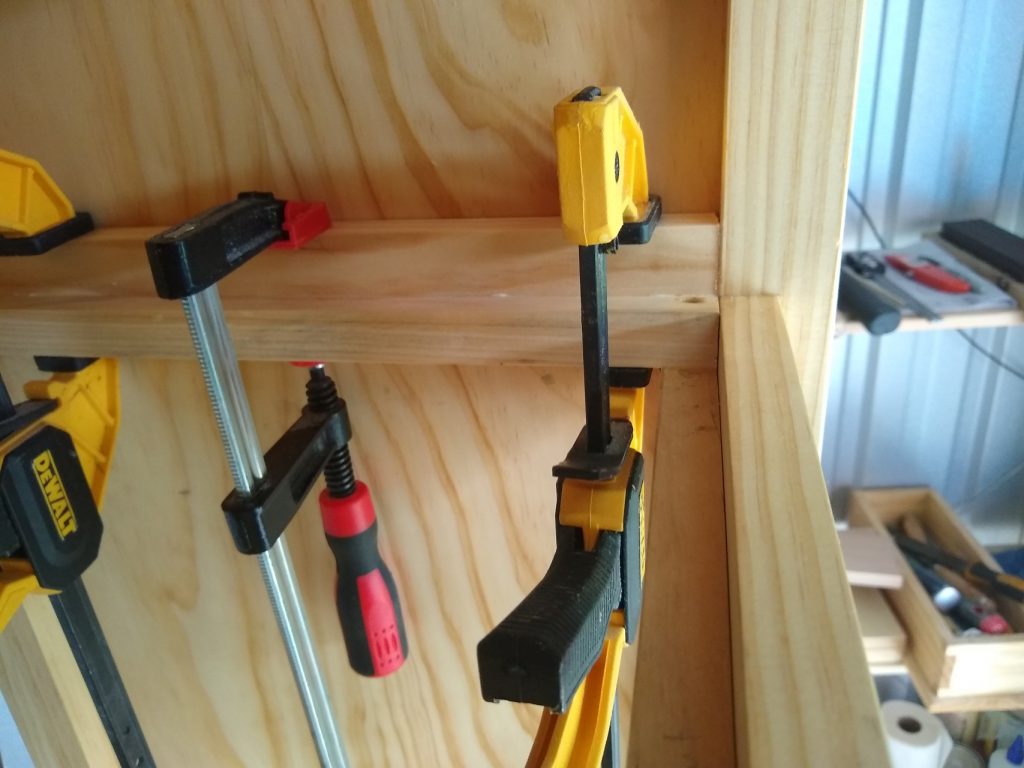
It will not be seen, so it is screwed and glued 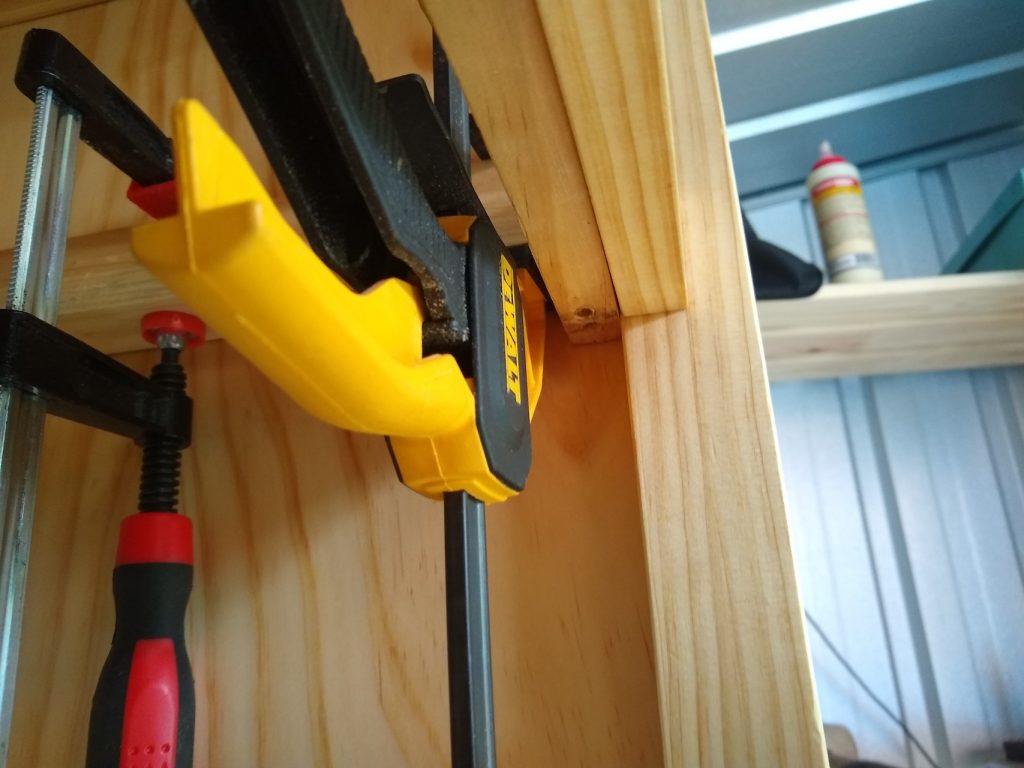

Flush fit drawer front 
Fitted drawer
Door
The door on the lower shelf is a frame and panel design, similar to the side panels except that the frame is made of tasmanian oak to match the top and drawer front, and the panel is pine for contrast. The frame is mortise/tenon again, and the panel is tongue/groove with a bevel on the front. In this case, I don’t want the panel to protrude from the frame, so I had to plane off the front of the panel until it was flush with the frame.
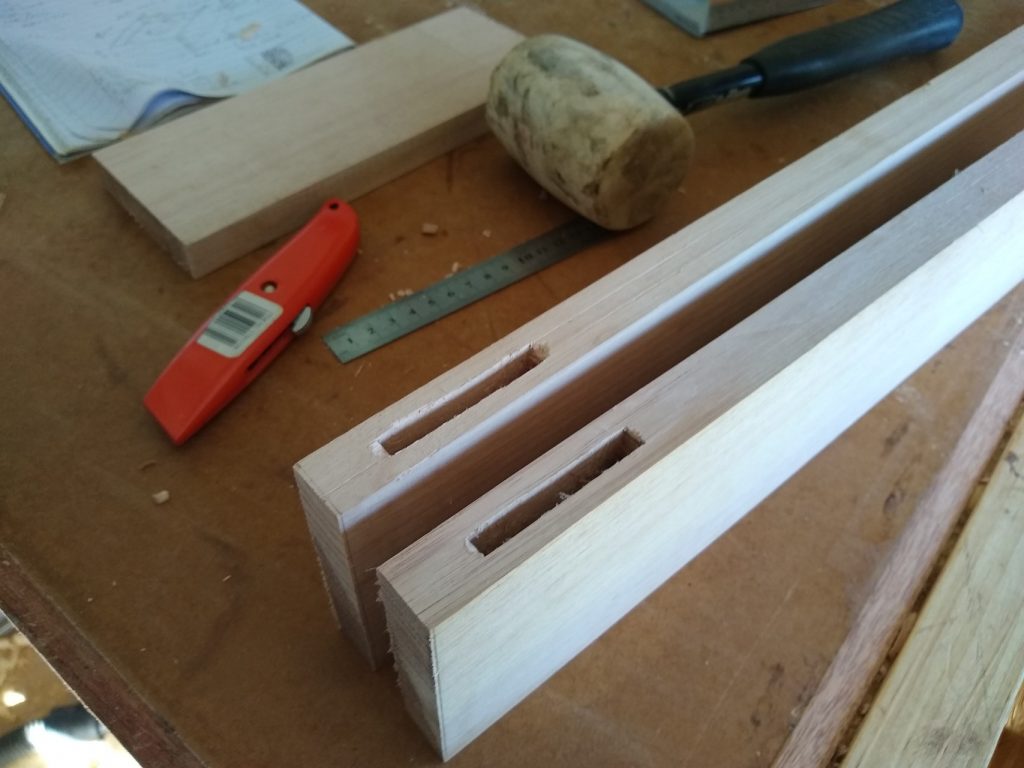
Door stile mortises 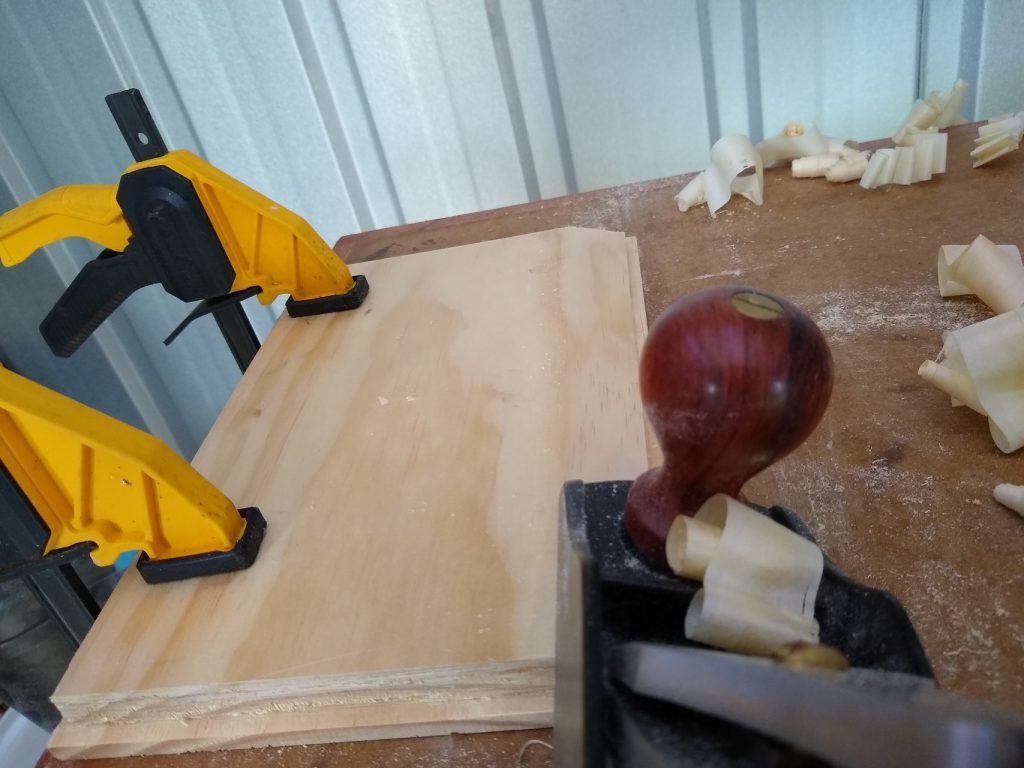
Planing the bevel on the door panel 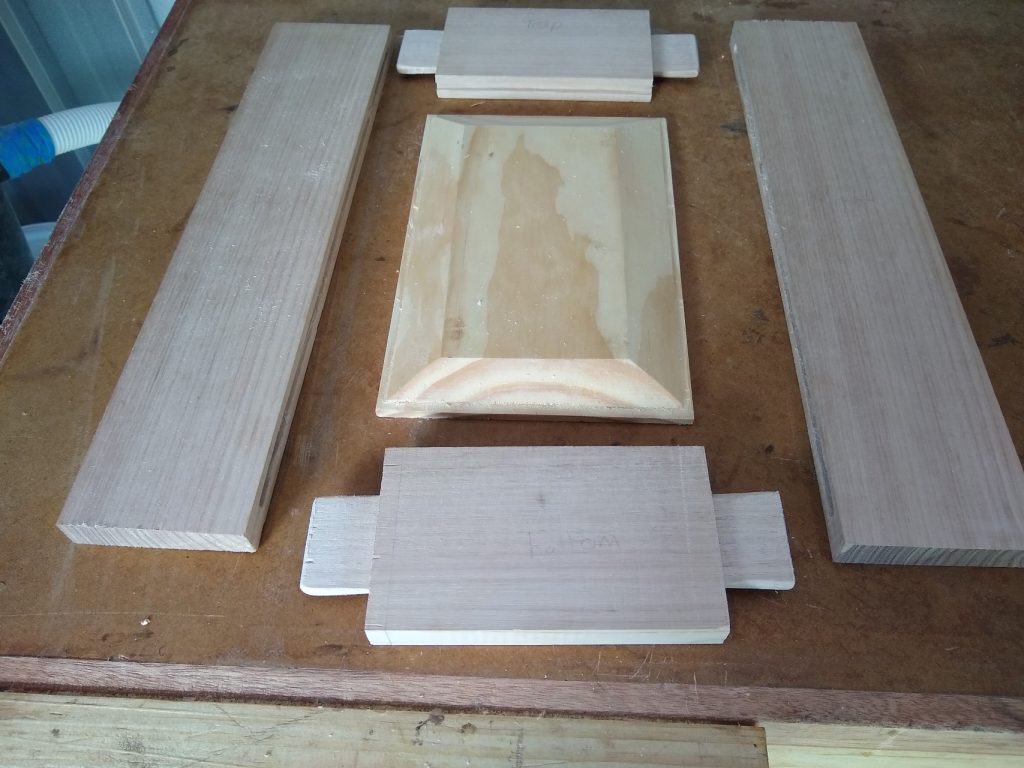
Door components cut and test fitted, ready to glue 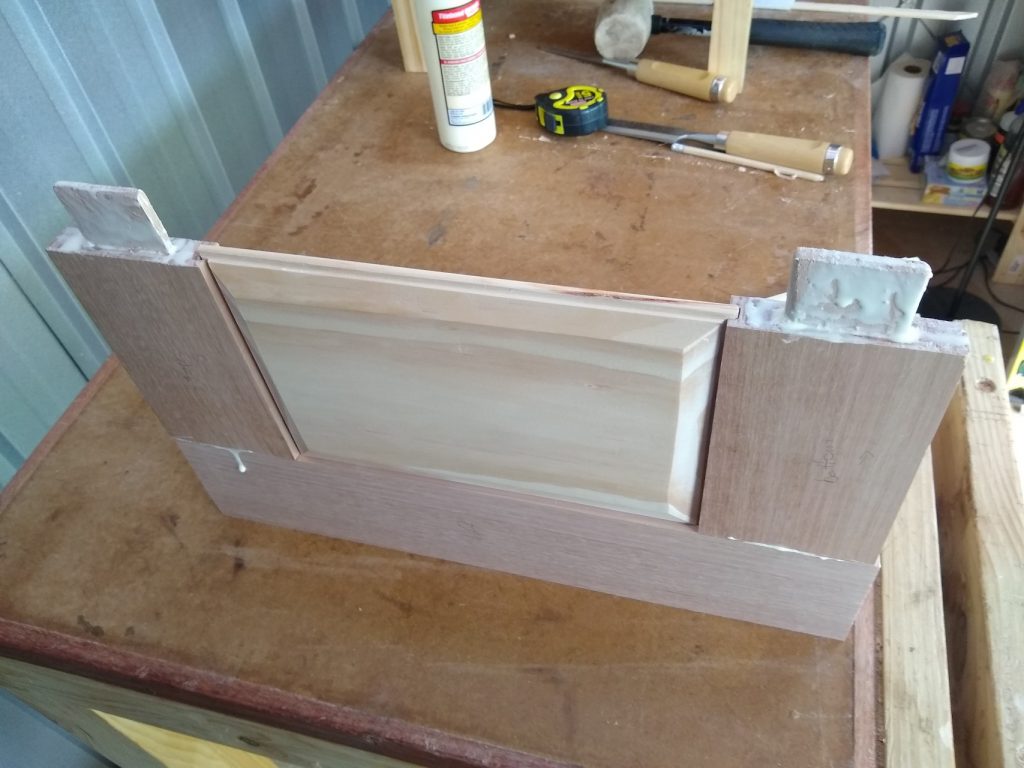
Glueing the door 
Clamping the door while the glue dries
Final Assembly
With the door complete, it was attached with some brass flush mount hinges and the entire piece was finished with a coat of boiled linseed oil and cabinet makers wax. The only remaining step is to fit some handles to the drawer and the door – I’m not sure what style I’m looking for yet, so for now it will have to wait.
Overall, I am quite happy with how it has turned out. I particularly like the look of the tasmanian oak with boiled linseed oil. It changes colour depending on the angle of the light, as can be seen in the picture below, sometimes very light almost like the pine, sometimes dark reddish brown and sometimes a slightly pink colour. Time will tell how well the joinery holds up over the years, which is the real test of the work.
